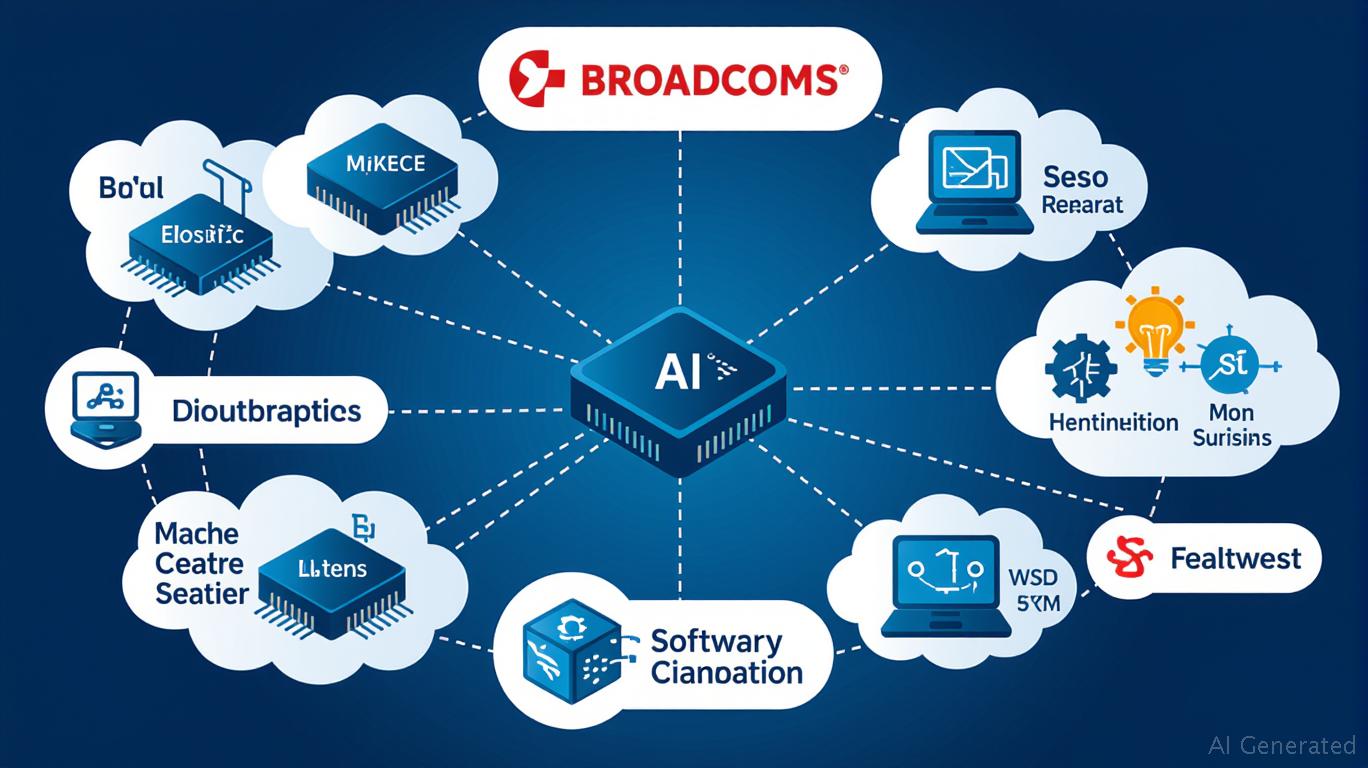Broadcom's AI Infrastructure Play: Why AVGO is Dominating the Next Tech Wave
The AI revolution is no longer a distant future—it's here, and the infrastructure required to power it is becoming the new battleground for tech giants. Among them,
(AVGO) has positioned itself as a silent powerhouse, leveraging its dual strength in custom AI chips and infrastructure software to carve out a dominant niche. Here's why investors should take notice—and where the risks lie.The AI Infrastructure Stack: Broadcom's Unmatched Synergy
Broadcom's strategy isn't about competing directly with NVIDIA's GPUs. Instead, it's about owning the entire AI infrastructure stack—from the silicon that connects servers to the software that optimizes their use. This synergy is its secret weapon.

1. AI Chips: The Networking Backbone
Broadcom's Tomahawk series of Ethernet switches are the unsung heroes of hyperscale data centers. The Tomahawk 6, launched in early 2024, delivers 102.4 terabits/sec of switching capacity—enough to support AI clusters with over a million custom accelerators (XPUs). These chips aren't just fast; they're designed for latency-sensitive AI workloads, ensuring that data flows seamlessly between servers, GPUs, and storage.
The next-gen Tomahawk 7 (expected by 2027) will push speeds to 3.2 terabits/sec, leveraging 2nm fabrication and co-packaged silicon photonics. This innovation isn't just about speed; it's about energy efficiency, a critical factor as data centers grapple with rising power costs.
2. Infrastructure Software: VMware's Hidden Gold Mine
While
grabs headlines with GPUs, Broadcom's VMware software quietly fuels the AI infrastructure boom. VMware Cloud Foundation (VCF) powers 87% of the top 10,000 enterprises, offering a turnkey hybrid-cloud stack that integrates seamlessly with Broadcom's hardware.The subscription model for VCF ensures steady, recurring revenue—92.5% gross margins in 2024 prove its profitability. This software-hardware synergy creates customer lock-in, as enterprises rely on VMware tools like vSphere and NSX to manage their AI workloads.
Strategic Partnerships: Hyperscalers Bet Big on Broadcom
Broadcom's hyperscaler partnerships are the engine of its AI growth. Major players like
, , and are already deploying 1 million XPUs each by 2027, with four more hyperscalers in advanced trials. These contracts aren't just about selling chips—they're multiyear commitments that guarantee revenue visibility.Even more intriguing is Broadcom's role in co-designing custom chips for hyperscalers. Unlike off-the-shelf GPUs, these “white-label” XPUs are optimized for specific tasks like inference or data routing, reducing costs and boosting efficiency. This model positions Broadcom as a strategic partner, not just a vendor.
Rumors of ties to Apple and OpenAI further hint at expansion into consumer and enterprise AI markets, widening its TAM (total addressable market) to $60–$90 billion by 2027.
Financials: Growth vs. Valuation Pressure
Broadcom's Q2 2025 results underscore its AI-driven momentum:
- AI semiconductor revenue: $4.4 billion (up 46% YoY), with Q3 projections hitting $5.1 billion.
- Infrastructure software revenue: $6.6 billion (up 25% YoY).
- Total revenue: $15.0 billion (up 20% YoY), with $6.4 billion in free cash flow.
Yet the stock's 38x forward P/E ratio raises concerns. Broadcom's valuation hinges on flawless execution—any stumble in chip production, software adoption, or geopolitical headwinds could send shares reeling.
Risks: Geopolitical Crosshairs and Legacy Drag
Broadcom isn't without vulnerabilities:
1. Geopolitical Exposure: 30% of manufacturing occurs in China, risking tariffs or export controls. Partnerships with ByteDance face regulatory scrutiny.
2. Legacy Declines: Non-AI semiconductor revenue fell 5% YoY in Q2 2025, a reminder that the company's future hinges entirely on AI success.
3. Valuation Sensitivity: The stock trades at a premium—any macroeconomic slowdown could pressure growth assumptions.
Investment Outlook: A High-Reward, High-Risk Bet
Broadcom's AI play is compelling, but investors must weigh the risks:
- Buy on dips: Consider accumulating shares if
- Hold for the long term: The software-hardware moat and hyperscaler partnerships create a durable competitive advantage.
- Avoid overvaluation traps: The current P/E of 38x leaves little room for error.
Final Take: Broadcom's integration of AI chips and infrastructure software positions it as a must-own stock for the AI era. However, investors should proceed with caution—this is a play for those willing to bet on execution in a high-stakes, fast-moving market.
Disclosure: This analysis is for informational purposes only and does not constitute financial advice. Always consult a professional before making investment decisions.

Comments
No comments yet